Lake Karachay
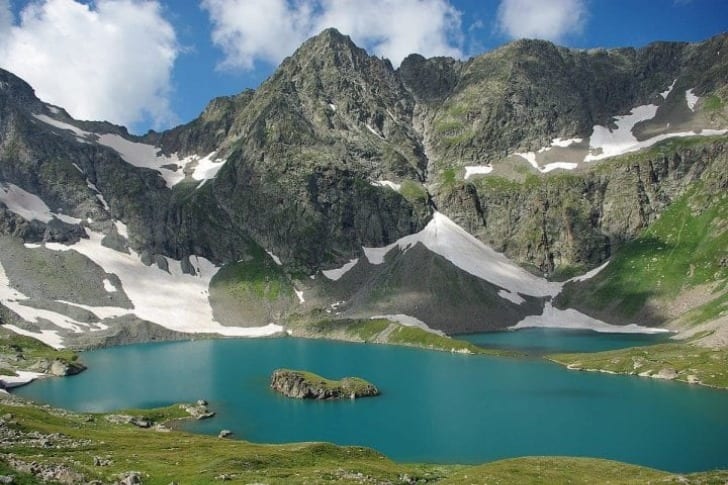
Lake Karachay, or Black Water Lake, is aptly named. The lake is in the Ural Mountains, Central Russia, and near a nuclear reactor site secretly built in the 1940s. The Russians used the lake for cooling water for the reactors, but when it turned out to be too small, they used it to store radioactive waste instead!
These days it is considered the most polluted area on earth in terms of radiation. In 1990 scientists estimated that just an hour’s exposure to the lake would be a serious life threat! It’s surely not the sort of place you’d want to be swimming in!
Citarum River
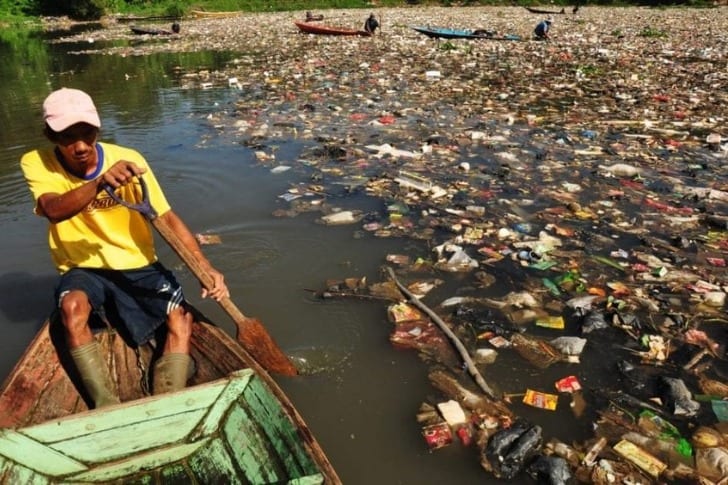
Over 5 million people live in the Citarum River’s basin, and over 2,000 industries here pump in toxic waste to the site, so it’s no surprise that this river in Java, Indonesia, is one of the world's most polluted. In some places, the water is hardly visible because there is so much garbage floating on top!
Unfortunately, the water itself is no better. The river supports the sewerage system and the factories have contaminated it with lead, mercury, arsenic, and other toxins. A long-overdue revitalization process is in progress, but we think it will be many years before anyone will choose to swim there!
The Boiling Lake
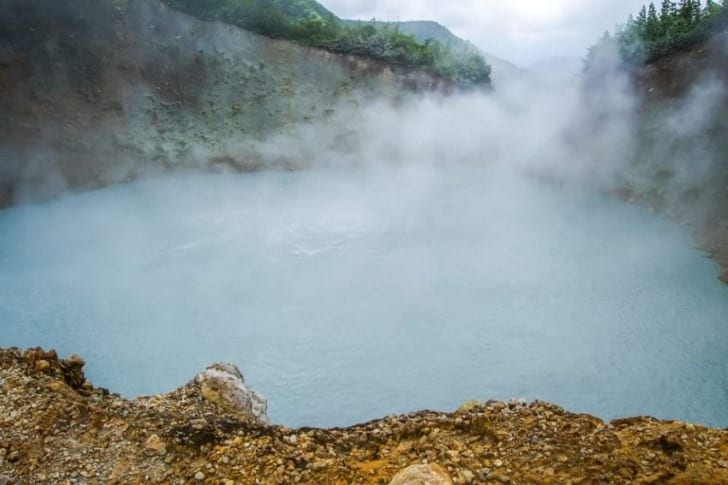
Every summer, we look forward to having a dip in the swimming pool's cold waters or the ocean and get the heat off of us. Not all places are safe to swim in, though, as they can be fatal. 'The Boiling Lake' in Dominica is one of the most dangerous places to swim in on earth, and there's an excellent reason why.
As the name suggests, temperatures in this lake can get as high as 93 degrees Celsius, and it is scorching hot. This phenomenon's leading cause is that the lake lies on top of hot magma, which heats the water to an unbearable warmth.
West End, Bahamas
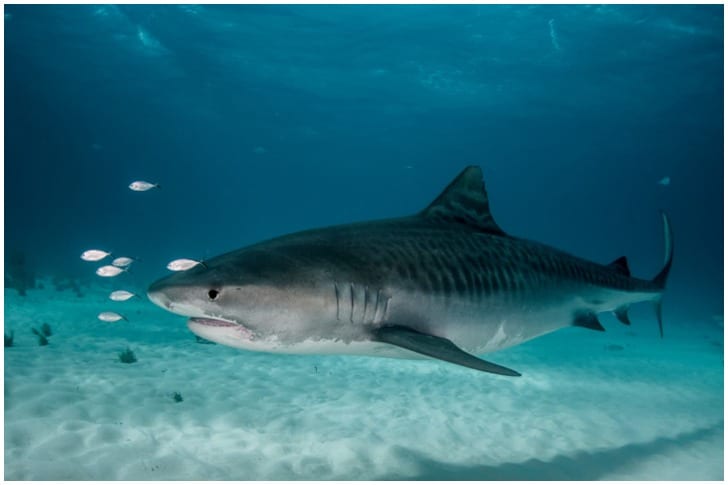
Sandy beaches, blue oceans, large islands, this is the Bahamas' Caribbean country in a nutshell! Sounds peaceful, right? While some of the places in this island country are every vacationer's dream, you might want to steer clear of certain areas. For instance - West End.
Of all the touristy places in Grand Bahamas Islands to visit, this the only one you should avoid, as it is home to an incredible number of sharks. And not like the friendly sharks you would find in Compass Cay, but these are dangerous and blood-thirsty. Thus, think twice before going there.
Barbados' East and North Coast
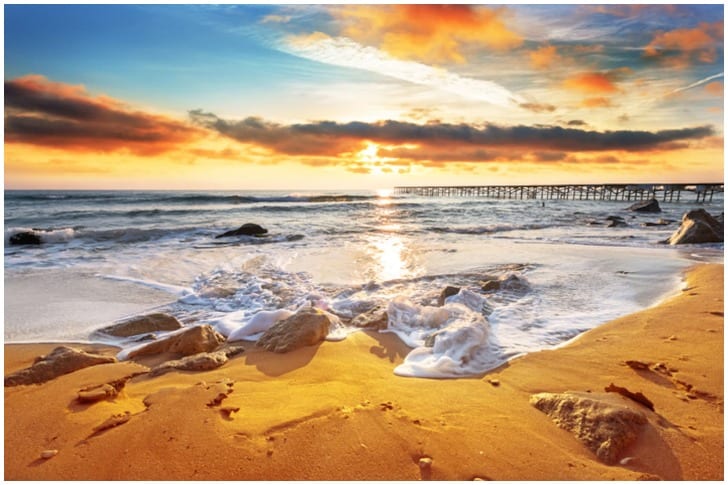
The South and West Coast of Barbados are excellent places to swim or do some snorkeling. You could relish the aquatic life at these places quite easily. But if we're speaking of the East and North Coast, then it's a complete no-no!
Unless you want to be swept away with the strong and high tides of the blue waters, stay miles away from the deep trenches of this ocean. Although, you could still sunbathe on the shores and have a relaxing time on a sunny Sunday afternoon. It's also a perfect spot to build sandcastles.
Condado Beach
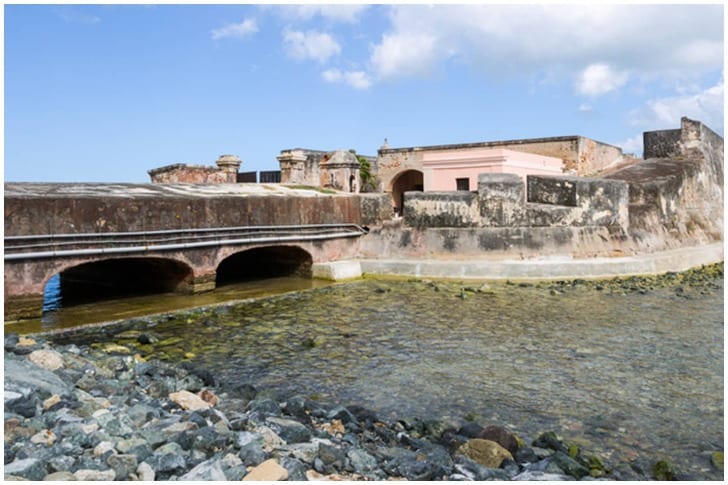
Condado Beach, amongst hundreds of other beaches, is a spot where swimming may not be the wisest decision. If you try to swim in these oceans, you might end up in the middle of nowhere in no time. The reason lies in the strong ocean current the region has. If you still choose to swim here, we advise you to remain cautious.
While there are no dangerous creatures in the water, nature itself could turn frightening if you show carelessness. If not anything, you could still have a great time rolling in the warm sand here, though! That's safe!
Myrtle Beach
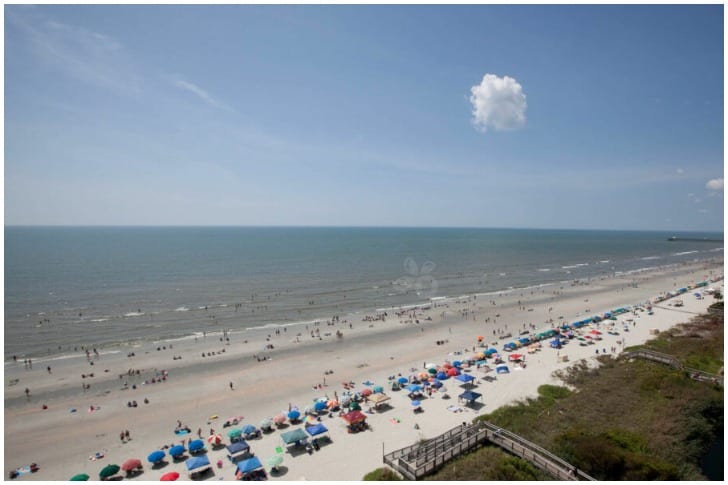
If you have never been scared of nature, you are about to be. Myrtle Beach is going to give you some severe creeps. Such is the saga of the life-threatening waves that these seashores offer. While on the shore, it might not seem so scary.
Once you step into the oceanfront, you would realize just why we advise you against going to this region. Moreover, Myrtle Beach is also feared for its crime rate, which has spiked quite significantly, So, that's one more reason not to visit this place - consider yourselves warned!
Galveston County Beaches
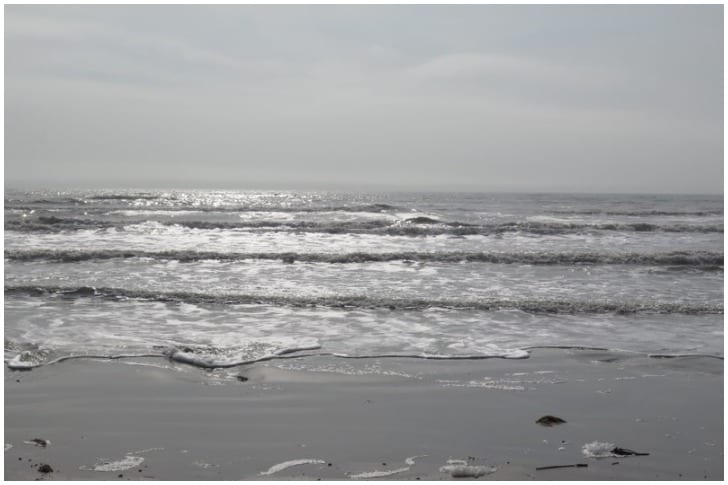
Galveston County Beaches authority itself makes it pretty clear that it is not safe to swim in the ocean's crystal blue waters. Well, if you see a "Swim at Your Own Risk" at the front of a beach, you might reconsider going there for a dip too, won't you now?
You'd be wise to forget entering the waters! The reason is high pollution levels. Would you be willing to swim into the carbon concentrated water? We assume no, so stay clear of these beaches. You could find other beaches that are considerably cleaner if you MUST swim.
Kilauea
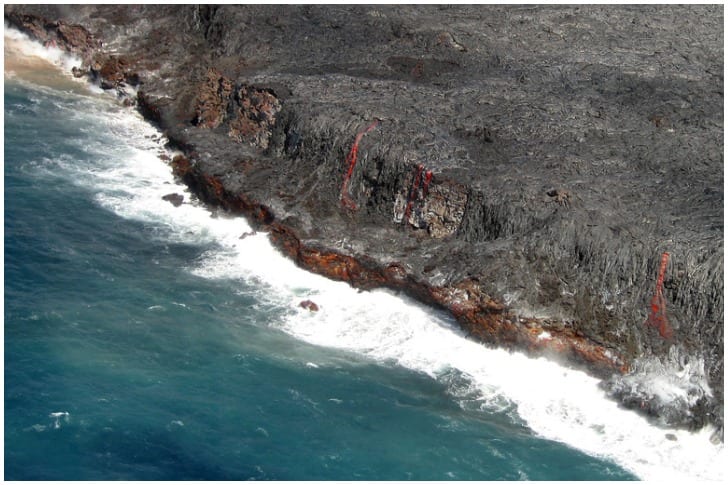
It's never pretty around volcanoes; you don't need us to tell you that. But we're going to tell you anyway. Kilauea is an active shield volcano on the Big Island of Hawai'i. It's beautiful there, we won't dispute that, but it's equally dangerous, as volcanoes are generally.
But the part we want to warn you about is the volcanic black-sand beaches, whose temperature levels could reach unreal heights. If the volcano erupts suddenly, which often happens, you would be subject to hot waters or even high tides. While you can still swim there, it's pretty risky. So dive in with caution!
Monastery Beach
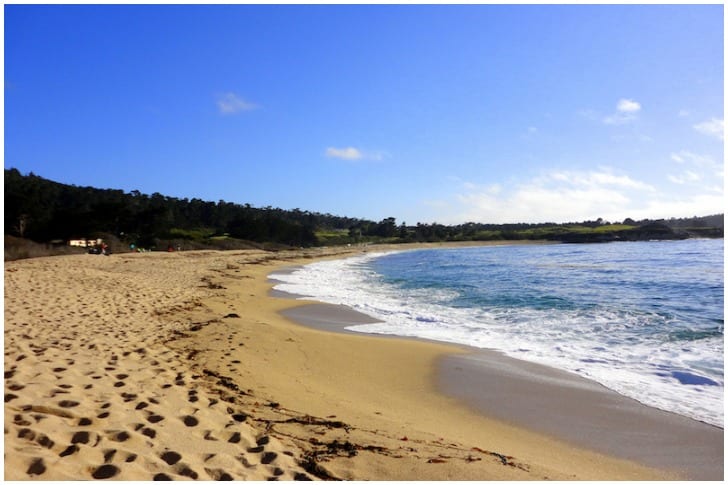
Monastery Beach is exquisite, but only from a distance! You do not, and we mean DO NOT want to get near the beach. While many of the frightening things occur off-the-shore in many other terrible places, Monastery Beach is dangerous on the sand, just as much as it is in the middle of the ocean.
It's all because of those large and gnarly waves that could take you to places that you're not ready to go, not to mention the strong undercurrents that the ocean houses. As long as your relish its beauty from a distance, you'd be alright, though.
Maldives of Novosibirsk
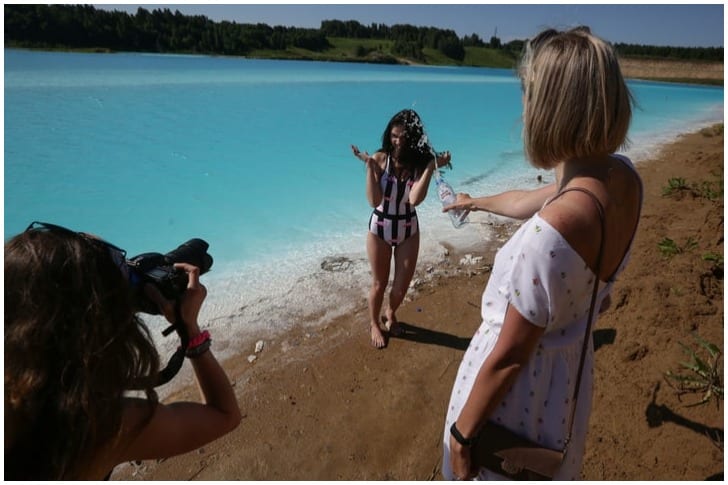
This island is beautiful, but only when you see it on Instagram. In reality? Oh, no-no. We strongly advise you not to go near this Siberian Island, no matter how much you want to witness the island's beautiful turquoise waters. Reason? Pollution.
The waters of this seemingly fascinating island are a natural dump for ash from a coal plant nearby. The substance makes the water highly toxic. You really don't want to go skinny dipping in this gnarly ocean if you fancy your skin. The coal company itself would advise you against dipping in this lake.
Potomac River
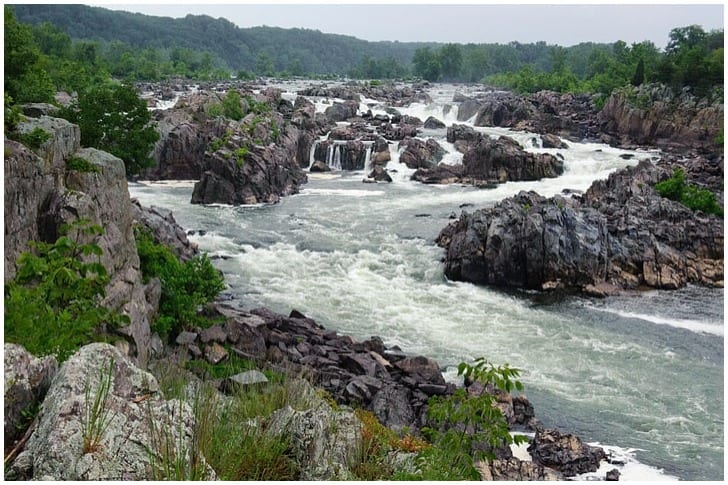
Potomac River has been home to ample toxic substances and its common knowledge across the states. While some official reports would tell you the level of toxicity in the waterbody has been reduced, it is still unsafe to swim!
This river received a high level of water wastes, and we don't need to mention just how harmful those things can be to the human body. If you don't want to subject your skin to infection or something worse, you're better off not touching the waters of this place. You could explore other sites nearby, though!
Lake Kivu
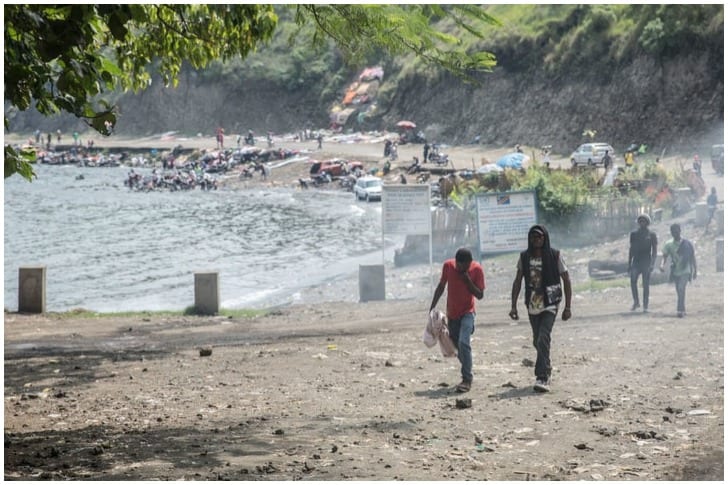
Sandwiched between Rwanda and the Democratic Republic of the Congo, Lake Kivu would have been an attractive swim spot - except that it is not. With the explosive gases trapped beneath its depths, the pool is a literal reservoir of power and not drinking water. Taking a plunge in is making a date with danger.
The lake seems to reflect the volatile situation of the countries around it. Like opening a bottle of champagne, the noxious gases in its bottom are only waiting for a bit of shaking to go boom. This lake is not safe for drawing water, picnics, swimming, or even a casual stroll!
The Blue Hole, Egypt
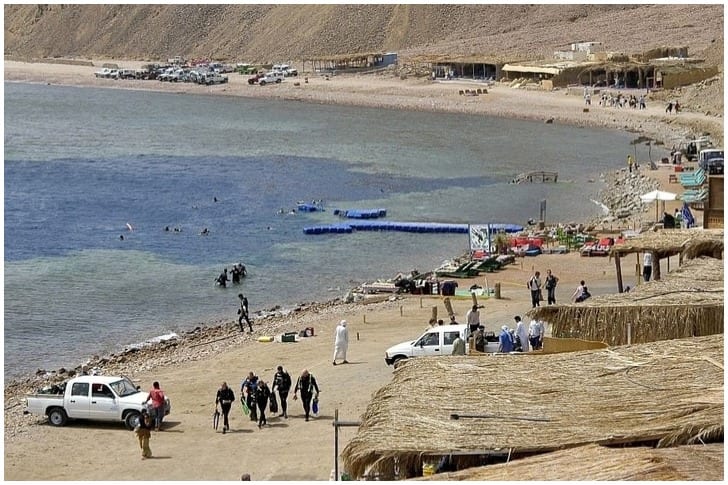
Like how a flame pulls in a moth, the Blue Hole in Egypt calls out to divers. What drives people to seek deep, underwater caverns where the sun's rays don't reach? It is probably the desire to explore or the boasting rights, but the 394-foot-deep underwater abyss is no stroll in the park, even for the most daring divers.
The azure sinkhole looks beckoning, but even a seasoned explorer will find it risky. Past depths of a hundred meters, nitrogen narcosis sets in like a drunken stupor. This fogginess is beyond the worst hangover- one from which you may never recover. Caution: the Blue Hole is not a watering hole.
Bangkok's Canals, Thailand

The canals of Bangkok do not have an unfathomable depth, lurking predators, or extreme temperatures. Its ailment is human-made; overcrowding caused both the pollution and colorful traffic on these tourist traps. The trenches would have been perfect for swimming in the old days. But those days are long gone and exist only in memory. In the present, the channels are used for transportation and as a setting for busy floating markets.
Bangkok is a beacon for tourists, and the canals have paid the price for their passage. If you visit this city, the bustling waterways are still famous for shopping and sightseeing but look elsewhere if you wish to swim.
Laguna Caliente
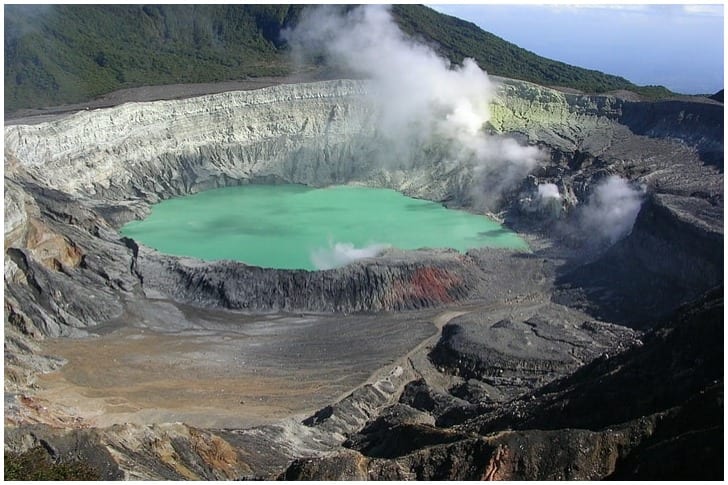
Laguna Caliente means ‘hot lagoon,’ and this is very straightforward. Please, no swimming; it is a far cry from a hot spring! While some water bodies are hot and some are acidic, the Laguna Caliente in Costa Rica is both.
It is scalding and toxic, and people have no business being near it. However, its waters change colors; sometimes, it is emerald green, blue, grayish, and even sulfur-yellow! This strange beauty draws in adventurers. They get it- no swimming and think that they are safe from a distance. Well, think again. The Laguna shoots up heated geysers; better run for cover or just run away altogether.
Lake at Kawah Ijen Volcano

A volcanic lake is not the first thing that comes to mind when looking for an ideal swimming spot. Testing the temperamental waters of the lake in Kawah Ijen volcano in Indonesia is not a good idea. Gases and steam arise from its depths, like smoke coming out of a chimney, which shows that something's cooking. Hopefully, this won't be you.
Remember how the Joker dunked himself in a vat full of acid? Who knows if he was aiming to be green or blue? If you are not an evolved creature that can survive alien planets, better give swimming in this lake's turquoise waters a hard pass.
Berkeley Pit
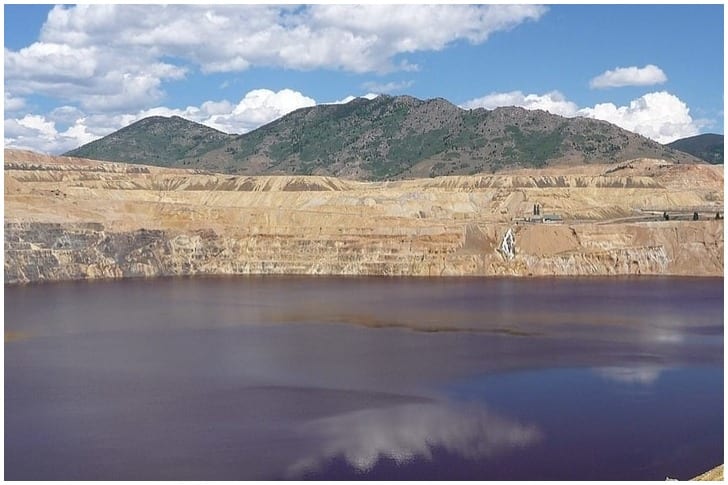
Why anyone would want to go swimming in a crater that was once a copper mine is beyond us. But creepy may also seem like beauty to others, and this water-filled pit fits the bill.
The gaping hole is now full of acidic water, and toxic sludge is in the bottom as well. We wonder what resilient life can flourish in there when chemicals are swirling in. The murky concoction belongs in a laboratory and not in a water-filled depression. Flavored with arsenic, copper, sulfuric acid, and zinc, to name a few, this one of a kind cocktail is not for swimming in or drinking.
Belize's Great Blue Hole
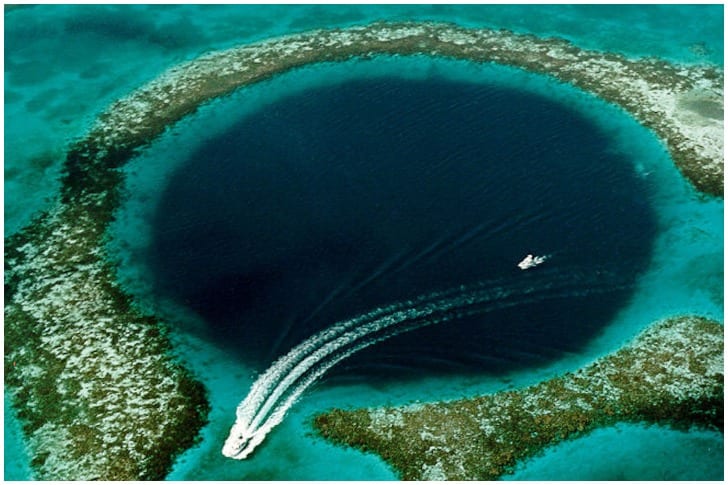
To say that the Great Blue Hole is mesmerizing is an understatement. The Great Blue Hole in Belize is indeed a sight to behold, though best left to trained professionals, as even experienced divers may get sucked in by swirling vortexes.
The photogenic spot in the Caribbean is one site a swimmer should not go near. Looking like a beautiful stain in the water; it is 984 feet wide and a whopping 410 feet deep. Points for this picturesque and perilous dive site- if one gets sucked in, the odds are not favorable. Better to give it a pass and enjoy the Blue from a safe distance away.
Lake Michigan
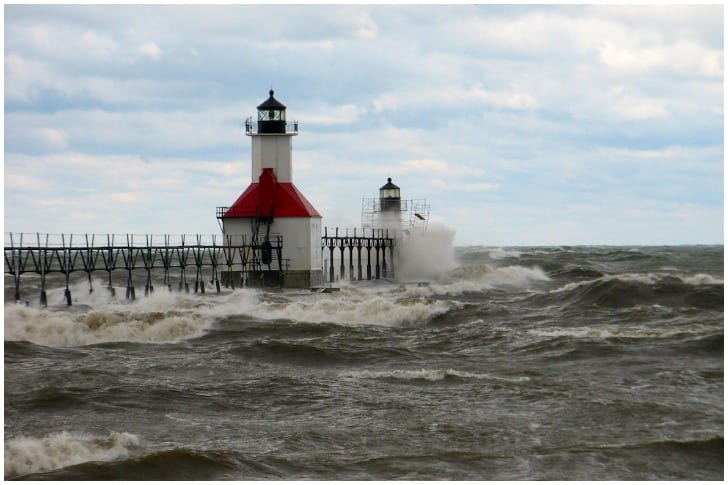
Lake Michigan makes for great sightseeing and picture taking. But this seemingly cooperative lake hides more than a few secrets. In truth, its tumultuous history is not so secret - the lake has claimed lives. The best view is from the safe side- to enjoy its beauty from afar and not be part of its history.
Dangerous currents, rocky shoals, and maybe ghosts of passengers from sunken liners are some of the reasons why Lake Michigan is not ideal for swimming. It is better to look further for a dip because a man, even a deft swimmer, is probably no match to this slumbering deep giant's might.
Drake Passage
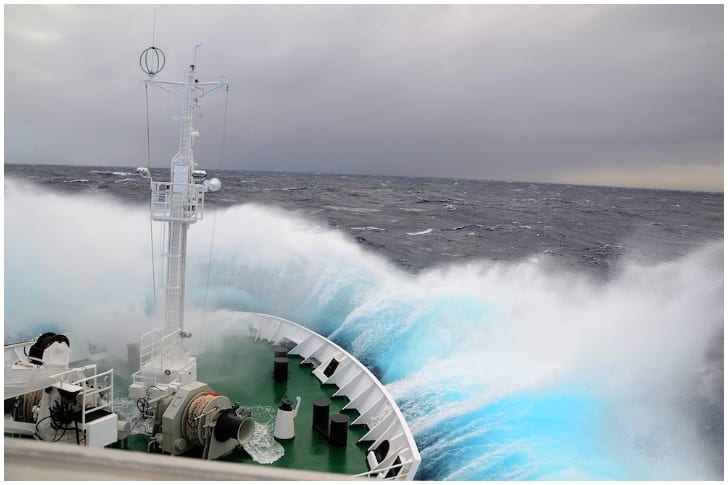
Suppose you are a fan of extreme weather, rough surf, hampered visibility, and ghost stories, then, in that case, Drake Passage, Antarctica is your thing. The swells here are some of the world's choppiest, and that alone is major a deterrent to most. Still, if that was not reason enough to give this channel a wide berth, it is also spectacularly frigid and deep.
Waters of the Pacific, Atlantic, and southern seas meet in this spot and give each other high fives while high waves batter crossing vessels. Hands down, Drake Passage, is not a place to swim or to test man vs. nature.
Orinoco River Basin
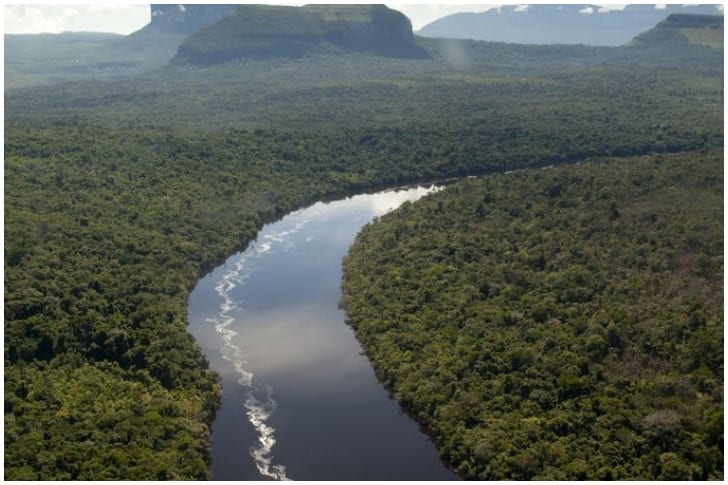
A river is just a river like any other, unless it is a busy and polluted waterway, in which case, it is not just a river anymore. Take the Orinoco river basin; this freshwater source has been an integral part of locals' lives. It used to be clean and suitable for human activities, now parts of it are murky, making it unfit for consumption and swimming.
Pollution concerns aside, the Orinoco is also home to the famous, toothy piranhas. While an excited tourist may want to swim to get clean, these fishes might clean them out! But seriously, the tainted water is the issue and not the often maligned fish.
Nyiragongo Crater Lava Lake
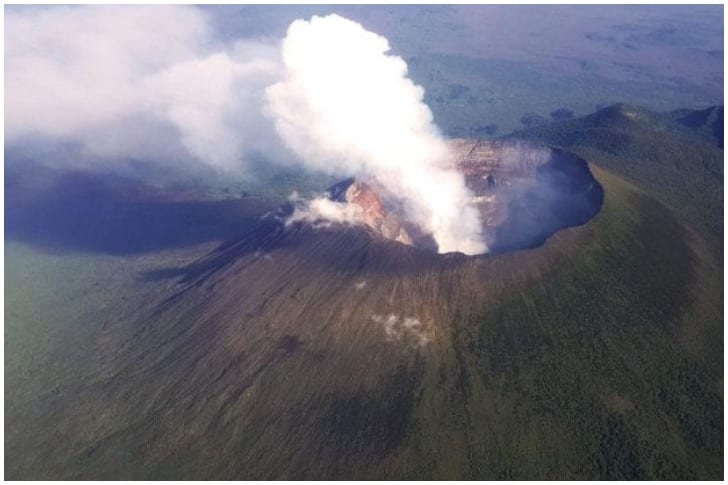
Thanks to Hollywood films about natural disasters, people have come to fear volcanoes even more. But explorers can't help but marvel at its beauty, especially if it comes with a lava lake, just like the one found in Nyiragongo Crater. Apparently, this lake is difficult to get to, but it's been recently conquered by a group of scientists who aimed to study the area further.
Tagged as the largest permanent lava lake around, Nyiragongo is situated in the Virunga Range of Africa and has eight volcanoes. With this incredible location and searing hot temperatures, it's safe to assume this lake isn't one where people can have a fun family picnic!
Lakes Nyos, Cameroon
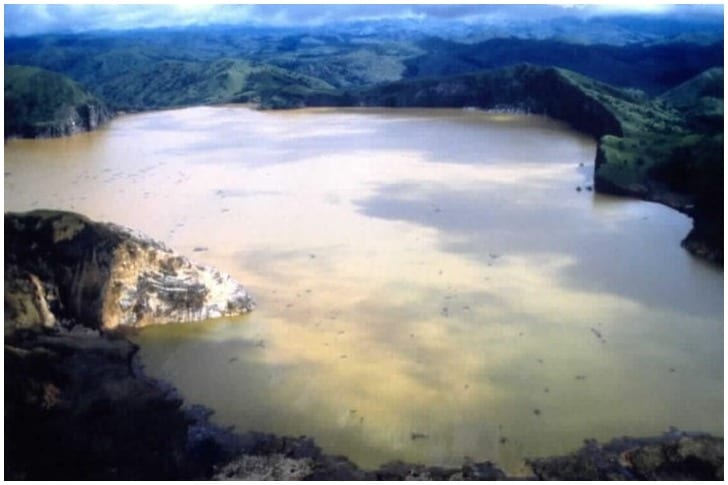
Here's another crater lake that looks outstanding from a distance but is actually a danger for humans. Located in Cameroon, Africa, Lake Nyos has formed years ago after an asteroid collided on its surface. The main thing that makes this lagoon stand out from the rest is how it sits on the Cameroon Volcanic Line, one of the country's most active geological sites.
Truthfully, it's positively forbidden even to consider swimming in the water as an earthquake could trigger an eruption and cause severe damage to the surroundings, like what happened back in August 1986. That tragic event should be enough to keep people at bay!
Victoria Lake
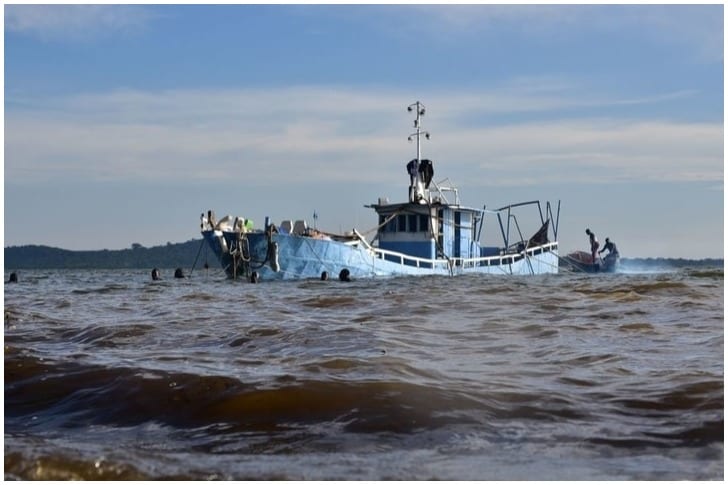
Oh, so you thought only America has some treacherous spots, but of course, there are other places in the world. Yes, Africa, too, has some dangerous water bodies that are better left untouched. Exhibit A - Victoria Lake. The name might sound royal, but it's far from it. The reason is frequent thunderstorms that could make the waves go sky high.
And unless you're Aquaman, you are suggested to steer clear of this seemingly placid lake, which also happens to be the second-biggest freshwater lake in the world. Just a little trivia we thought you might appreciate.
Chinese Waterways
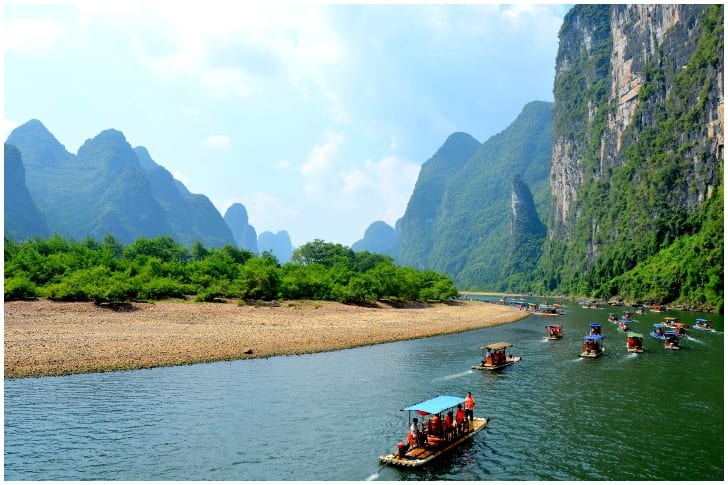
When one thinks of China, its waterways are probably the last thing that comes to mind. But actually, the Land of the Sleeping Giant faces some critical water issues due to the intense industrial pollution. Almost every significant water body in the prosperous country has already overflowed with chemicals and other toxic wastes.
What’s more, citizens were even more alarmed when an algae bloom outbreak occurred in some lakes and rivers since its water now has harmful nitrogen and nitrate levels! It looks like swimming is off the itinerary in case you go on a trip to China.
Northern and Eastern Beach, Australia
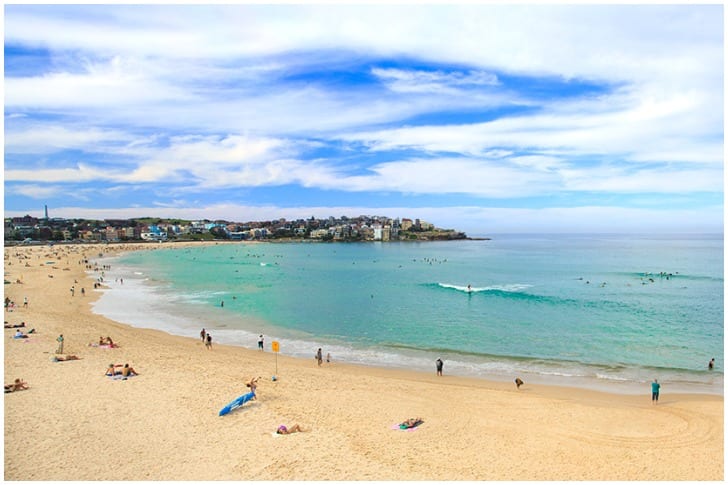
Even for those who enjoy exploring its depths, the ocean is a beautiful yet scary place. And perhaps you can find one of the most dangerous waters in Australia, particularly the Northern and Eastern beaches! Apart from the typical great white shark, you would be surprised to know that something as seemingly ‘harmless’ as a jellyfish can be far more lethal – that is, the box jellyfish, to be exact.
Not only that, but the Land Down Under is home to several other deep-sea creatures such as the scorpionfish and the blue-ringed octopus, to name a few. In any case, that’ll surely make anyone think twice about swimming for sure!
Lake Vostok
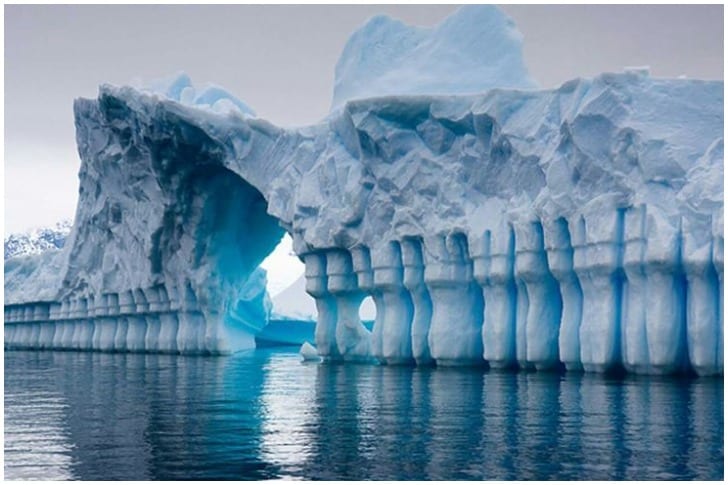
Somewhere in the beautiful and icy Antarctic landscape sits the intriguing Lake Vostok. As a subglacial lake around for a million years, much of its depths still remain largely unexplored. But the unique thing about it is how it has helped researchers determine whether there’s life on other planets with subsurface water.
Unfortunately, swimming or any water activity is virtually impossible in Lake Vostok due to its freezing water temperature of -3ºC. So, unless you want to become a popsicle, then it’s best to steer clear and simply admire it from afar!
Gulf of Thailand
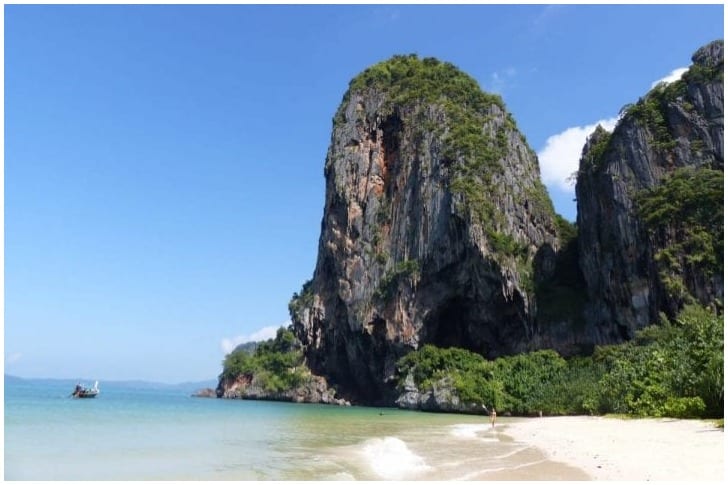
The Gulf of Thailand waters may look enticing, but a fair warning before you jump into the clear blue water, though – it’s overrun with box jellyfish! In case you didn’t know, it’s actually one of the most poisonous sea animals known to science despite its minute size and appearance.
With its life-threatening sting, a person could immediately go into anaphylactic shock, paralysis, or worse, an untimely demise. But don’t let these eight-inch species spoil your Thai holiday plans! As long as proper swimwear is involved, then a sting should be the least of your concerns!
Lake Chagan, Kazakhstan
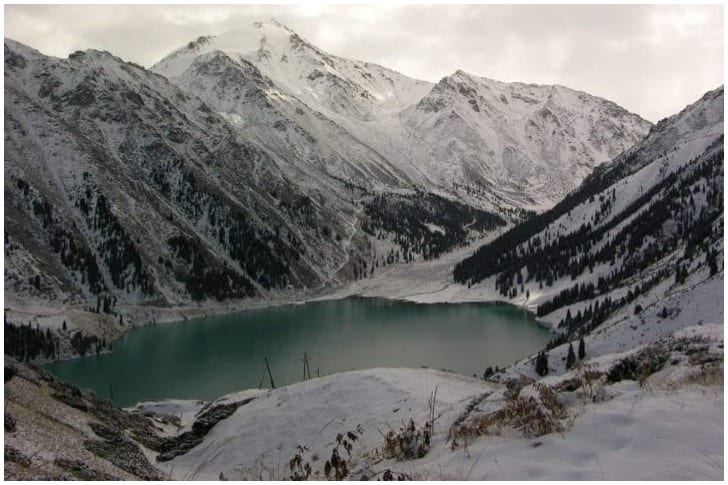
Imagine a lake nestled in the middle of gorgeous mountain scenery. It sounds like a dream, right? Well, Lake Chagan is all that, but with one catch – it’s radioactive! Aptly nicknamed the ‘Nuclear Lake’ by the locals, an underground Russian test explosive detonating created the waterhole.
At 300 feet deep, the reservoir is entirely toxic because of how it came into being and the radioactive activities in the area. You might as well pack your bags and head somewhere much safer for a swimming excursion rather than risk your health by wading in its waters!
Beqa Lagoon, Fiji
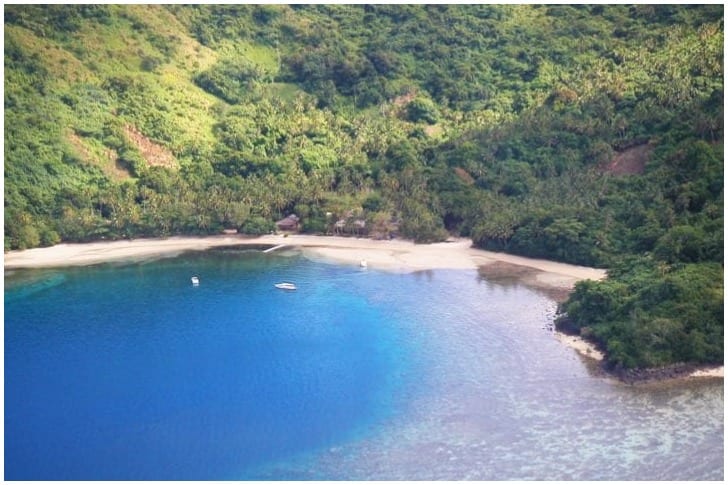
If you ask anyone what they fear most about being in open water, it's the presence of sharks. And although not all places are infested with these 'sea monsters,' the thought of it is just frightening. Interestingly, the Beqa Lagoon in scenic Fiji knows this dilemma unlike any other since it's overrun with Great Whites!
Many of Fiji's tourists have caught sight of the sharp-toothed animals lurking in the deep, and as expected, people tend to panic whenever they show up near the coast. On the plus side, locals found a way to combat this fear by starting a shark encounter diving activity. Hmm, maybe we'll stay onshore instead!
Pustoye Lake, Siberia
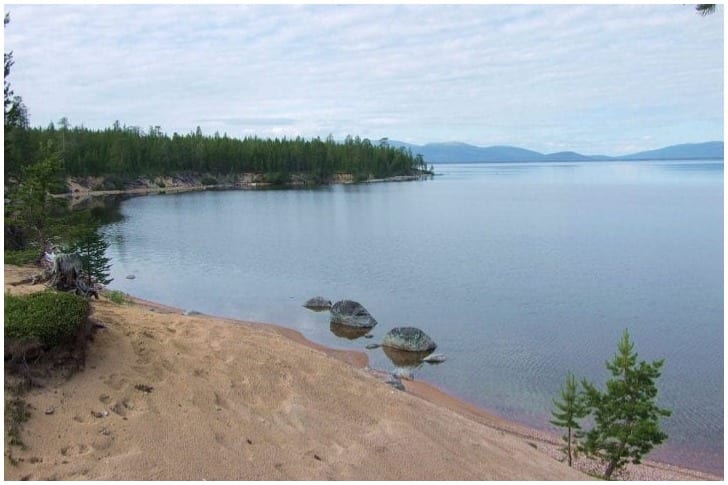
Believe it or not, there’s an odd phenomenon happening in Siberia’s Pustoye Lake that has baffled scientists globally. Typically, flora and fauna thrive in the water without any problem, but nothing seems to stay alive in there.
Researchers have planted various types of greenery and filled the lake with different kinds of fish in hopes of learning more about its nature; however, everything perished in a matter of days. To be fair, the lagoon looks clean, but maybe dipping your toes in it might not be the best idea after all - at least not until further scientific investigation!
Mono Lake, California
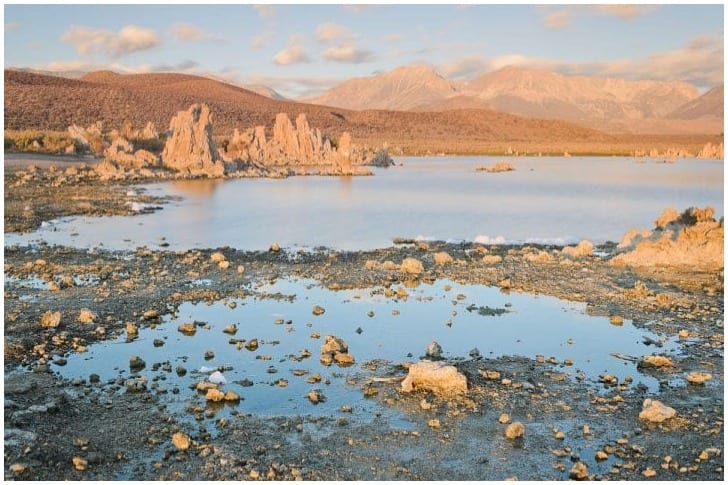
There are numerous lakes in California, with the most famous one being Lake Tahoe. Unfortunately, there's one that's just nearby the popular waterhole that has lost its beauty due to its toxic waters – Mono Lake. At a glance, it's apparent that the once-lush greens and clear waters are now but a mere memory, mostly due to the pollution brought by towns sprouting nearby.
The lagoon's water quality has been exposed to carbonates making its geological state uninhabitable to both plants and fishes throughout the years. Indeed, it's best to simply head on to Lake Tahoe if frolicking in the water is on the agenda.
Jacob's Well

While not owned by a guy who goes by that name, 'Jacob's Well' is one of the most beautiful places in Texas, with calm crystal clear waters that you can see the bedrock of the lake. With that beauty comes some peril, and you’re better off avoiding the area altogether.
The lake has a system of caves and tunnels under it for explorers, making it a perfect spot to have some adventure. However, the problem is that many people get lost in the vast maze, that they never make it out of the tunnels. You'd rather be safe than sorry on this one and not go diving down under.
The Nile River
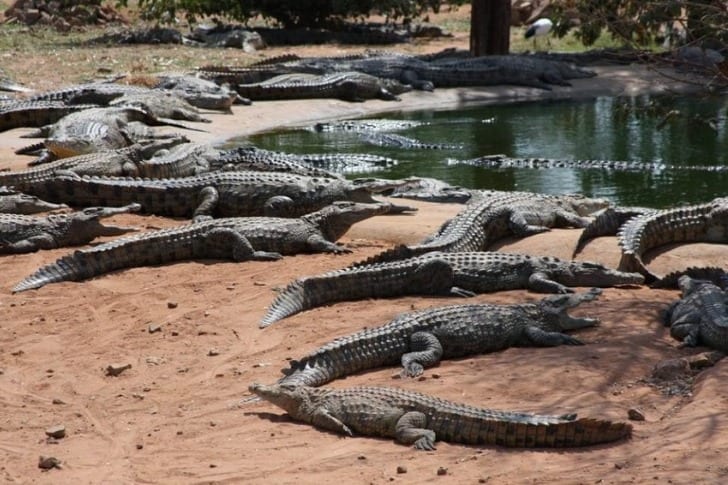
Known among the world's longest rivers and found at the cradle of humanity, the 'Nile River' is a sight to behold. Found in Africa, the river can be enticing to swim in after a hot day in the wilderness while on a safari, but that shouldn't be done at all costs.
Despite the pollution, making it unsafe, the river is also filled with venomous snakes and spiders. As if that was not enough, the main predators of River Nile are the crocodiles, who are super dangerous, and with speeds of up to 35kph, it is safe to say you cannot out-swim them.
Hanakapiai Beach
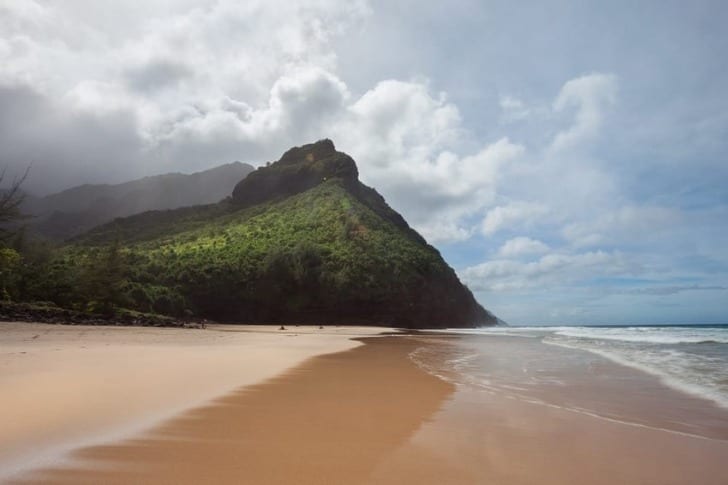
While we all would love to go to Hawaii because of its beautiful sandy beaches, perfect weather, and incredible coral reefs, not all beaches are fun to be on. While you can enjoy getting a tan at the 'Hanakapiai' beach, it is a bad idea to go swimming there.
To date, it is estimated that close to 80 people have lost their lives after they were swept away by the strong ocean currents found there, and their remains were never found. The beach might be alluring, but don't try to brave the waves.
Bubbly Creek
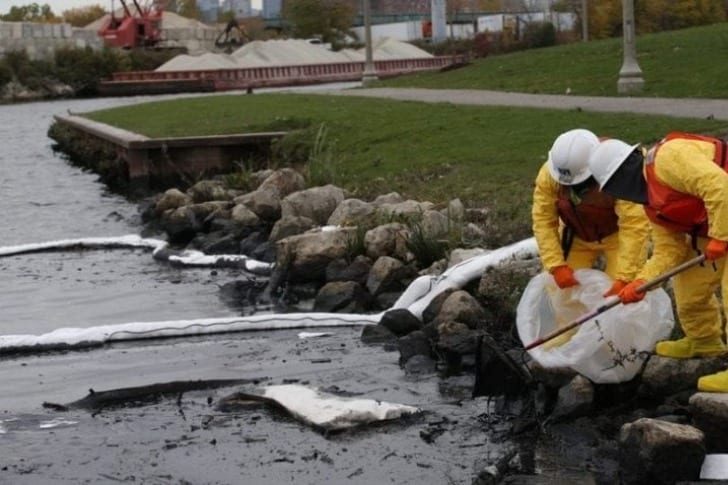
One of the areas that you should never think about taking a dip in is the 'Bubbly Creek' along the Chicago River. For a long time, much of the river has been a dumping site for meat processing waste, and with time, they started to decay, making the smell intolerable.
The decomposing filth produced some gas, which made the bubbles, from which the area got its name. And while the creek has been cleaned, the water is still toxic, that fish cannot survive there. If you want the perfect swim, then Bubbly Creek is not the place to be.
Samaesan Hole
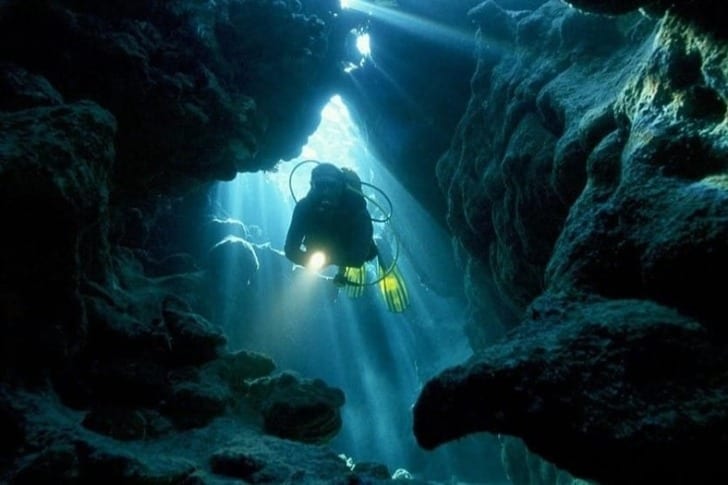
Thailand has many beautiful sceneries, scrumptious street food delicacies, and beaches that could get you the perfect tan. But not all places are swimmer-friendly, especially if you have never ventured beyond a country club pool!
The country’s Samae-San Island is home to the Samaesan Hole, a dangerous water body for many reasons. It is a military waste dumping zone, for starters, which poses a risk of an explosive going off at any time. Besides, it can be as deep as 280ft - that is roughly thirty times deeper than an average pool!
Eagle’s Nest Sink Hole

The Sunshine State might not be all that sunny for those planning to venture into the Eagle's Nest Sinkhole! While it has vast caves, a wide tubular chimney, and water-laden passages, there's more to it. Apparently, the 1035ft deep natural formation is so dangerous that even the most skilled divers choose to stay away from it.
Nitrogen Narcosis, a state of extreme euphoria, is a phenomenon experienced by the divers who have tried to reach the bottom of this sinkhole. So they end up losing track of their tank levels or depth causing consequences of tragic proportions.
Kipu Falls
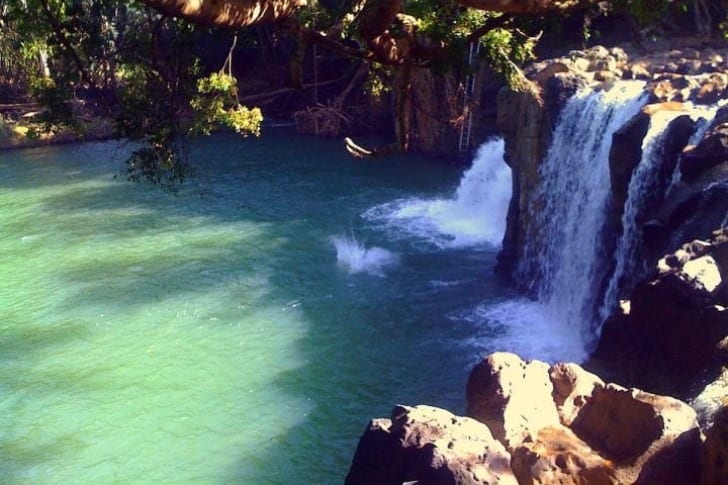
Remember 'Raiders of the Lost Ark'? The Kipu Falls was the location for filming one of the scenes! But all the aspiring Indiana Joneses must remember that this is a private property where trespassing is prohibited. Besides, there have been many incidents of swimmers drowning in dangerous holes.
Many locals in East Kauai believe that this phenomenon occurs due to angry 'Mo'o,' a spirit lizard, that lingers around the place. On the other hand, the science guys attribute the mishaps to the presence of a whirlpool that generates strong underwater currents. Either way, entering into it is not a wise idea!
The Amazon Basin
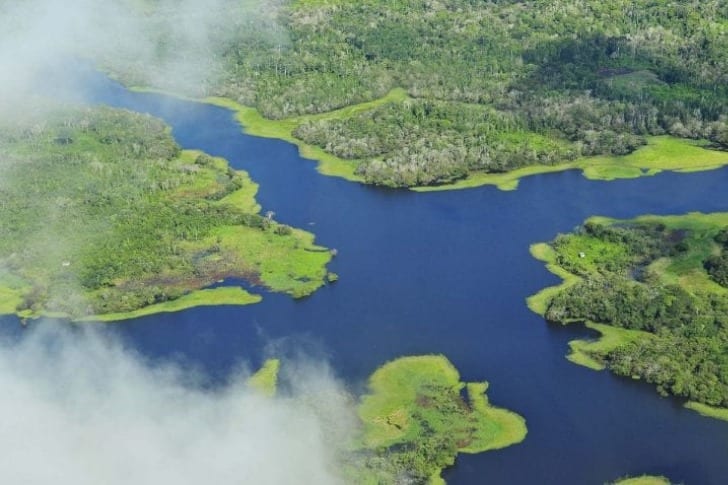
There are many human-made and natural perils in the Amazon Basin, giving it an outstanding reputation of being a doubly dangerous place. Right from strong currents to the massive amount of toxins released into the river, there is a threat at almost every turn.
If these aspects aren’t enough to prevent you from swimming in the water body, then how about fearsome creatures! The most menacing ones in the Amazon include arapaimas, anacondas, and giant tarantulas. We recommend you to watch Jennifer Lopez’s ‘Anaconda’ before making any drastic decisions for a trip here!
Lake Victoria

Spanning across 70,000 sq km and three countries, Lake Victoria is easily among the world's most magnificent water bodies. At the same time, it's also considered the deadliest in the world owing to the 5000 casualties every year. So why does this tranquil lake have a notorious reputation?
Often, tourists end up underestimating the weather conditions here and try to take a dip here. The lake has what is known as a micro-climate, which means that there's more to it than what meets the eye - read freak waves and unexpected whirlpools.
Horseshoe Lake
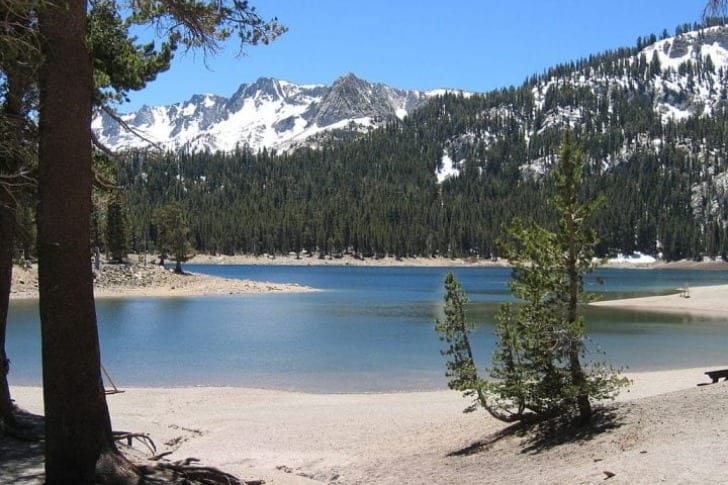
California’s residents know the reality behind the serene and colorful Horseshoe Lake. After all, they have witnessed earthquakes, bubbling magma, the emanation of harmful gases, and much more in the past few decades.
Located in the Lassen Volcanic National Park, this place has become so polluted that over 100 acres of trees have succumbed over time. And now, all the toxic materials seem to be entering the adjoining lake, making it a scary zone for swimmers. While the place is open for tourists, going to the nearby Mono Lake instead seems to be a safer bet!
Rio Tinto
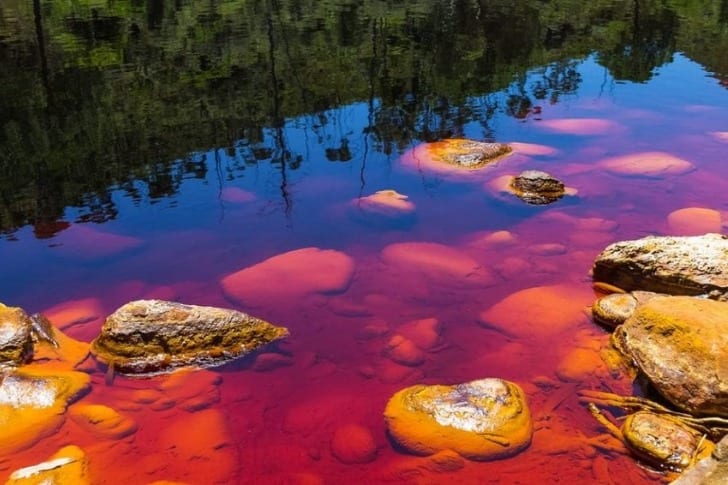
The Rio Tinto is truly a sight for sore eyes! Flowing from the Sierra Morena mountains of South-Western Spain, its eye-catching colors and vast landscape are sure to leave anyone spellbound. Amidst all this, it is essential not to get carried away by all the alluring aspects!
A quick re-visit to your high-school chemistry textbook can teach you that the river’s low pH of 1.7 can be pretty hazardous for human beings. Thanks to all the mining and chemical waste, swimming in the bright red stream has become a distant dream.
The Ganges River
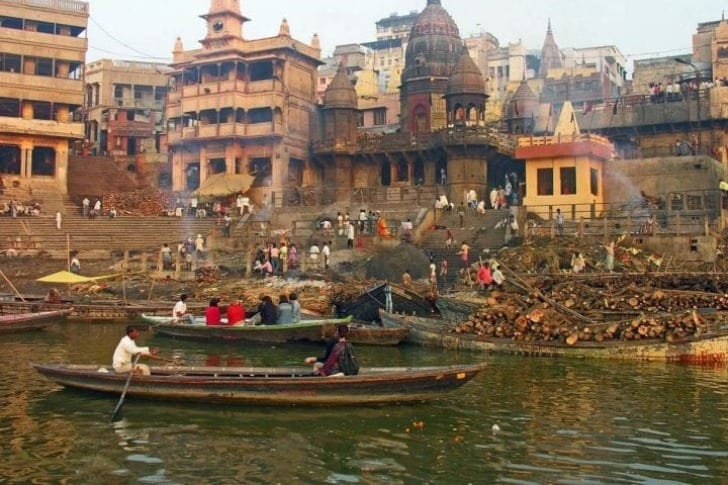
The Ganges has a reputation of being a sacred river that can wash away anyone’s sins with a single dip, and this is the sole reason why millions of Indians visit it every year. Its reverence does not deter industries and individuals from polluting it since there’s a lot of chemical and human waste that ends up getting dumped in it.
Ultimately, the 1700-mile long river has become a giant breeding ground for diseases like dysentery, hepatitis, and cholera. This fact is more than enough to take swimming out of the equation!
Gansbaai
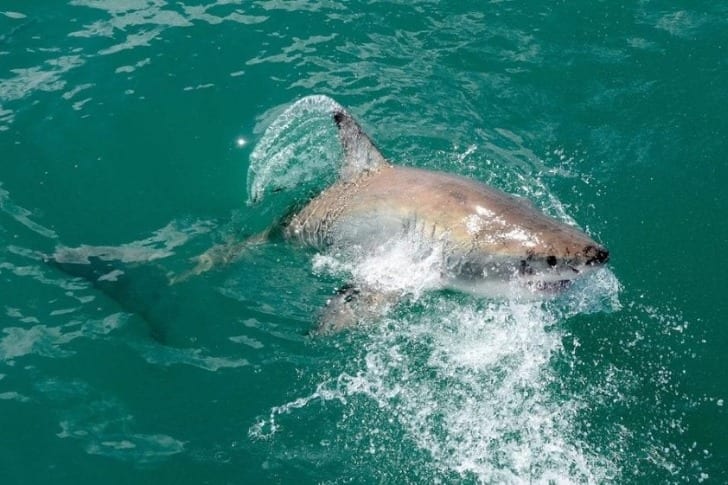
Welcome to South Africa’s Gansbaai, where there are beautiful beaches, warm waters, and an unending tree-lined shore. It is no doubt a paradise, but there is one danger that all tourists must be wary of - aquatic predators!
Right beneath the pleasant waves, there is a notorious ‘shark alley’ which is densely populated by the great white sharks. They are increasingly getting closer to the shore in the pursuit of their prey - fur seals. Keeping this in mind, you can dive into the water only in the presence of experts and underwater cages!
Hoover Dam
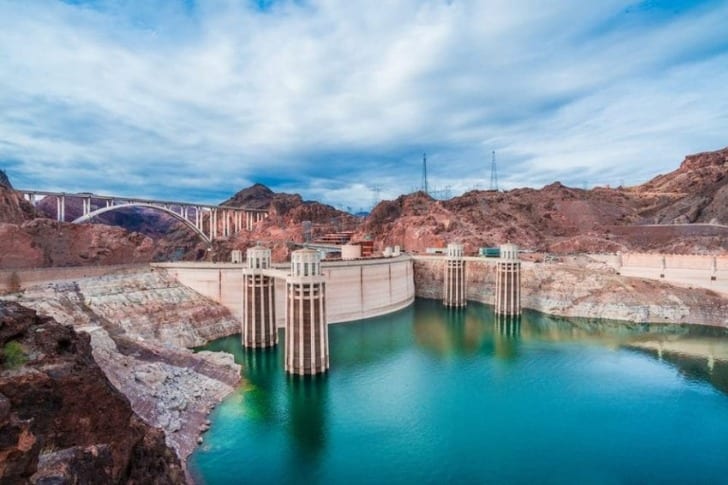
At a depth of over 300-feet, the vast reservoir that abuts the Hoover Dam never saw anyone cross it until the year 2017. It is because there are many impending dangers - at best, you might land in a police lockup, and on the other hand, there is the risk of not making it to the other end!
With the casualty count going as high as 275, this one channel is best left unconquered. You are certainly better off trying your luck with the Powerball lottery rather than swimming here!
Blue Lagoon
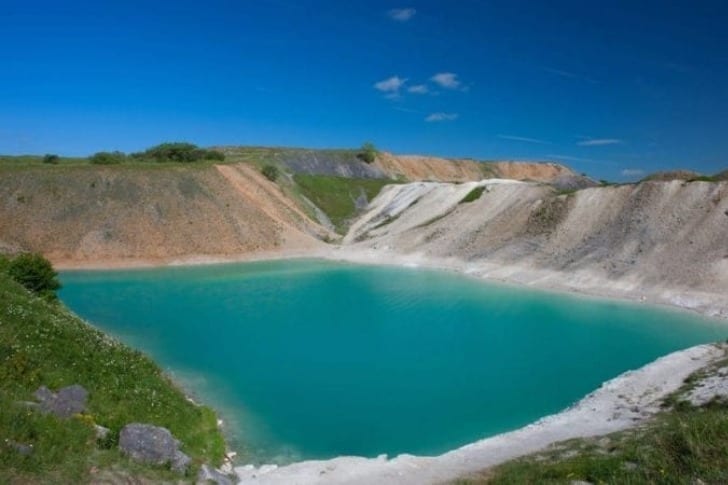
The Blue Lagoon is also colloquially called the ‘toxic soup,’ one that can be hazardous to our health. While it is indeed an appealing turquoise-colored water body, the bleach, ammonia, and calcium oxide that are present in the river make it a dangerous place to dip your feet.
Situated near the small town of Buxton, the lagoon is an old quarry that carries many chemical residues owing to its past as an active industrial hub. A deeper exploration into the place’s murky history is bound to make the lagoon less appealing!
The Gulf Coast
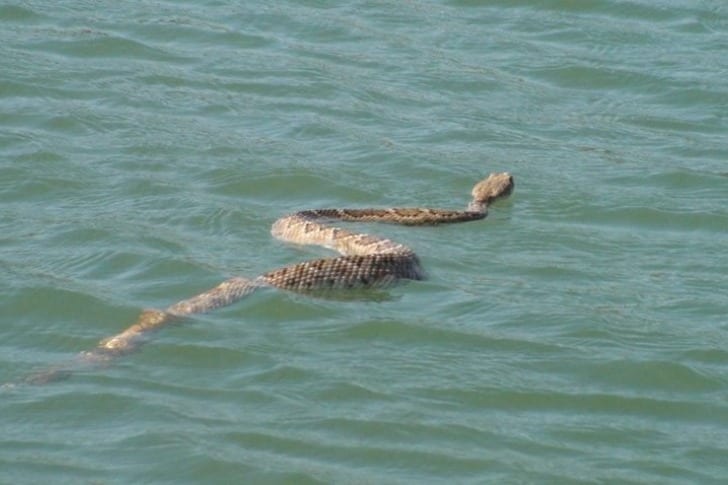
Let us just say that the Gulf Coast in the southern part of the US is a little different place and its warm waters usually shimmer in the sun. Even though it looks like heaven, swimming here is not a great idea as danger lurks beneath the blue waters. Numerous creatures favor the Gulf coast conditions and believe us that they are not ready to share it.
It is home to some of the rarest creatures, including Jellyfish, stingrays, and swimming snakes. Interestingly, big, gigantic sharks are always on the prowl not far away from the shores. Are you still ready to take the risk?
The Strid
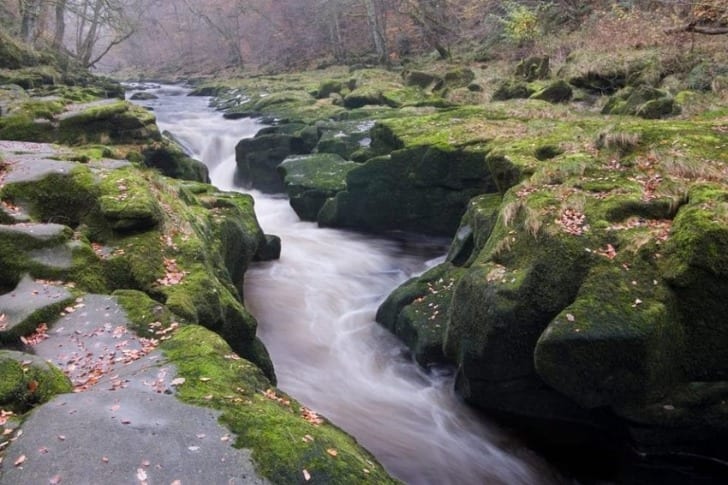
The Strid in the middle of Yorkshire, England, mostly attracts those keen to chill out on a humid and hot day. Surrounded by lush green trees and moss-covered red rocks, it is undoubtedly a scenic place. But don't get carried away as this heavenly location is dangerous, and numerous people have perished here.
What makes the locale so perilous is the presence of countless hidden and small currents. And the people who fall in the stream, these currents become deadly for them, sucking them down and eventually resulting in injuries and even worse. We are sure that is something you would not like on your nice refreshing vacation on the Strid.
Reunion Island
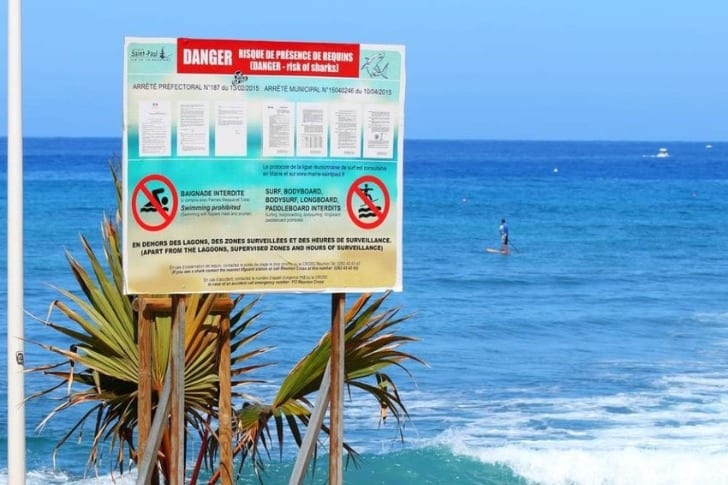
If you want to witness scenic views, where the waters are warm, the sun always shines, and the sands are golden, then Reunion Island is the perfect place for you. Not only the French resort in the Indian Ocean is an ideal place to take a dip, but you also get to see exotic fish, sharks, and rare yet friendly dolphins. Still, dangers lurk underwater, and we bet that you don't want to go in there without a guide.
There has been a sharp surge in shark attack incidents in recent times, and most were fatal. In response, island officials have now banned surfing for the peoples' protection.
Queensland
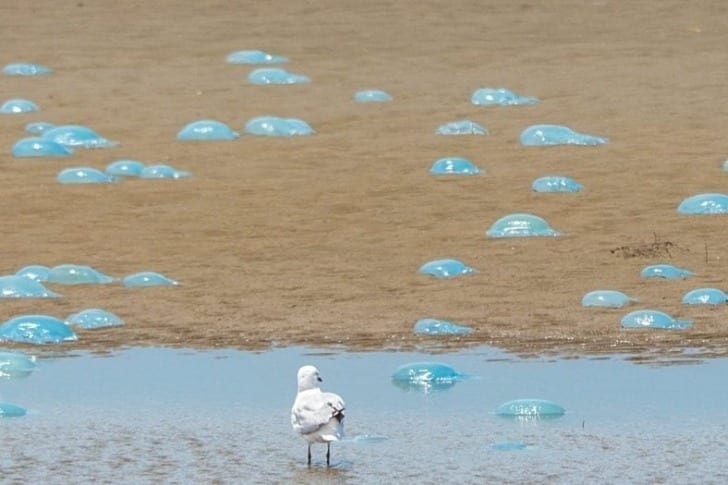
Not only Queensland is the second biggest territory in Australia, but it is also among the most dangerous places for a nice swim. One would ask, why? Well, that is because it is home to countless terrifying and deadly creatures, including scary blue-ringed octopus, stonefish, saltwater crocodiles, box jellyfish, and sharks. So, take our advice seriously and avoid swimming at all costs.
Among all these creatures, box jellyfish are particularly deadly as their one sting can quickly induce a cardiac arrest, and you'll be out of this world in no time.
Bolinas Beach
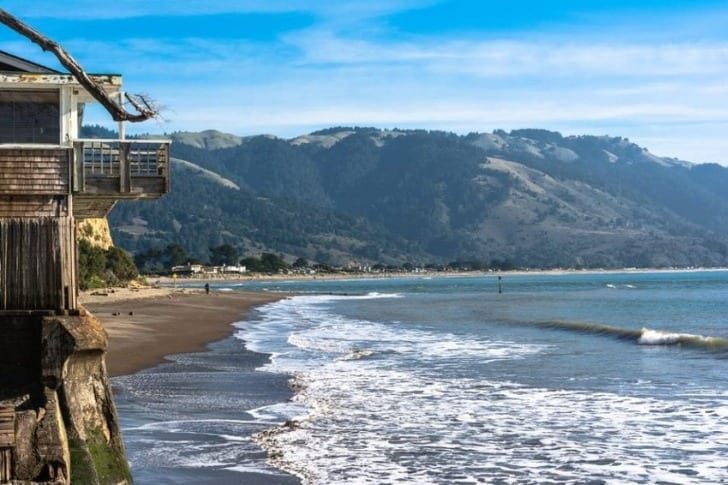
Let us all agree that California is home to several breathtaking beaches in the world. However, some of these are also among the deadliest one, particularly Bolinas Beach. The reason why this part of California is so popular among the sharks is the concentration of seals and the like. Perhaps, that is why the deadly sharks mistake humans for their food, resulting in an attack.
Although such attacks are not so common and happen very rarely, you should take great care while visiting the beach. Because whenever it happens, the results are far from good!
New Smyrna Beach
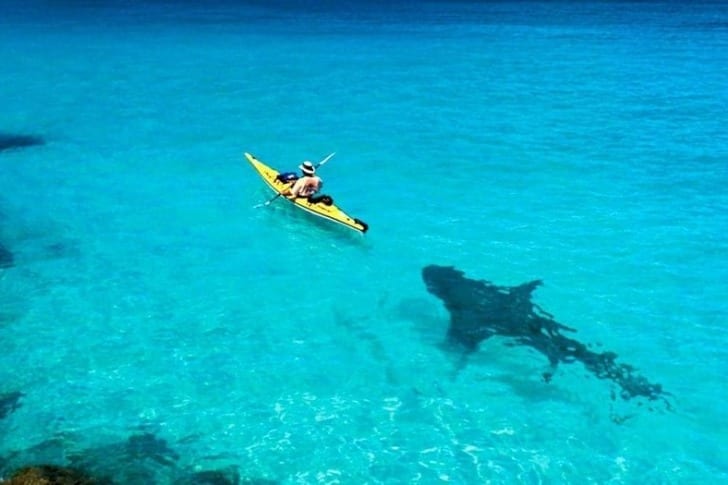
Just like California, Florida is also best known for its beaches and the variety of seafood. However, like Bolinas, New Smyrna Beach is bordering the sea, making it a home to some of the deadliest sharks. Interestingly, it is also dubbed as the 'Shark Attack Capital' globally, primarily because of numerous fatal attacks on surfers and swimmers.
Believe us that New Smyrna Beach is not the place where you would like to go for a vacation. Most people would choose somewhere more inland, where the chances of such attacks are impossible. That is what we call fun!
Victoria Falls
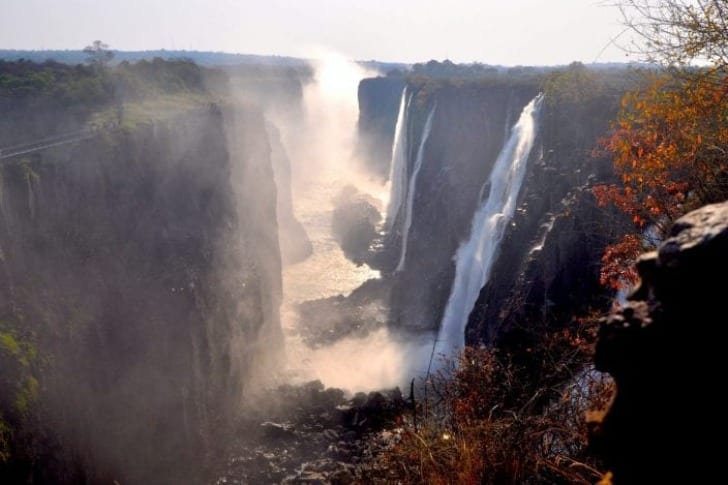
Home to the most incredible series of majestic waterfalls in Africa, Victoria falls is one of the most picturesque places on the continent. That is probably why not many people would like to swim there because it can be fatal, given the water flow. However, if you visit the place to witness some breathtaking and scenic views, it's the perfect spot - For swimming, not so much!
There are small underground digs called 'The Devil's Pool' which accumulate deep waters tempting for a swim. But considering that these are on the lip of the waterfall, don't even think of doing it; just one mistake could be fatal!
